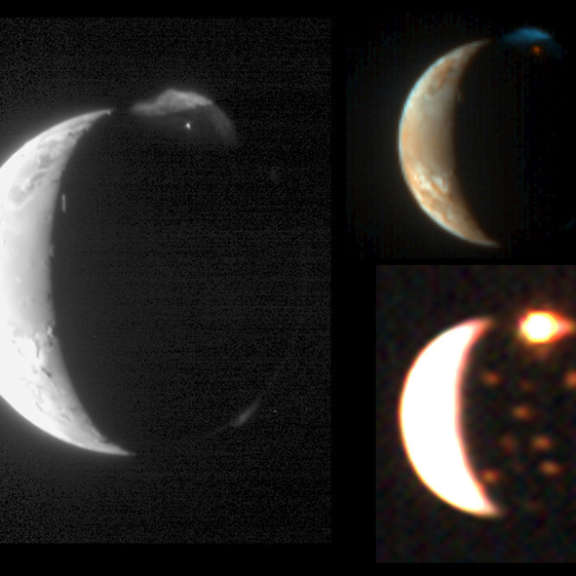All
All
Stories, updates, insights, and original analysis from The Planetary Society.
When Space Science Becomes a Political Liability
John Culberson, an 8-term Texas Republican and staunch supporter the search for life on Europa, lost his re-election bid last week. His support for Europa was attacked by opponents and could send a chilling political message about the consequences of supporting space science and exploration.
How I created a Jupiter rotation video using Hubble data
Judy Schmidt shares the technique she used to make a beautiful new animation of Jupiter.
In search of ice and fire: Europa analog fieldwork in Iceland, 2018
The terrain of Iceland – the Land of Ice and Fire – has some very interesting similarities to Europa.
Looking at Io's Volcanoes Since Galileo
It’s been almost 17 years since NASA's Galileo spacecraft took meaningful data of Jupiter’s volcanic moon.
Here are some recent postcards from Jupiter
Let's check in on NASA's Juno spacecraft, which completed its 14th close flyby of Jupiter last month.
Eleven perijoves
Seán Doran has made a cool visual index to the images that JunoCam took during Juno's first 12 closest approaches to Jupiter.
Juno meets Cassini: A new merged global map of Jupiter
The Juno spacecraft that is currently orbiting Jupiter has obtained the first good images of Jupiter's polar regions. I am presenting here a combined global map of Jupiter, made from a Cassini map I made for the equatorial and temperate regions and polar maps made from the Juno JunoCam and JIRAM polar images.
Juno's 12th perijove in lifelike color
With the help of some preprocessing of JunoCam images by Mattias Malmer, Don Davis shows us how Jupiter might have looked on April 1, 2018, if we'd been aboard Juno.
Space grade electronics: How NASA’s Juno survives near Jupiter
Take a look at how electronics of spacecraft are built to survive the harshness of space environments.
Diving into Juno JIRAM data archives
The Jovian Infrared Auroral Mapper (JIRAM) instrument can obtain images in two infrared bands. JIRAM can see the nightside of Jupiter (including the winter pole) and takes spectacular animations.
Moon Monday: Galileo's Galileans
This week it seems fitting to feature a portrait of the Galilean moons by Galileo.
#LPSC2018: Groovy Galilean satellites
The Jovian system is a busy place. The Groovy Galilean Satellites session at last week's Lunar and Planetary Science Conference (LPSC) covered analysis of past mission data, testable hypotheses for future missions, and discussion of the use of ground-based data.
#MoonMon: Io's pretty plumes
On this Moon Monday, I'm featuring an animation processed by Gordan Ugarkovic, showing Jupiter's volcanic moon Io with its prominent plumes.
How the Falcon Heavy could revolutionize exploration of the ocean worlds
SpaceX's Falcon Heavy is not just for big payloads, it can also throw light things into space very fast. And that has significant implications for the exploration of distant destinations in our outer solar system—particularly the ocean moons of the giant planets.
No plumes? No problem. How Europa Clipper will analyze an icy moon's ocean
Europa doesn't have grandiose plumes like Enceladus. So how will the Clipper mission figure out what's in Europa's ocean?
#AGU17: Spherical harmonics, gravity, and the depth of winds at Jupiter
Results from the Juno gravity science experiment presented at last week's American Geophysical Union meeting suggest Jupiter's winds penetrate only to 3000 kilometers deep.
#AGU17: JunoCam science
JunoCam may be an outreach instrument, but its superb photos of storms on Jupiter are providing plenty of data for scientists to talk about.
Brief note from #AGU17: Juno observes volcanism on Io
At the American Geophysical Union meeting, members of the Juno team showed observations of active volcanism on Jupiter's moon Io.
Clipper Slipper
Will NASA's Space Launch System be ready to launch a Europa mission in 2022?
Explore spinnable Saturn and Jupiter moons with Google Maps
Google Maps released several new map products that allow you to see the locations of named features on many solar system planets and non-planets, spinning them around in space with your mouse.


 Explore Worlds
Explore Worlds Find Life
Find Life Defend Earth
Defend Earth


 Sun
Sun Mercury
Mercury Venus
Venus Earth
Earth Mars
Mars Jupiter
Jupiter Saturn
Saturn Uranus
Uranus Neptune
Neptune Small Bodies
Small Bodies


















